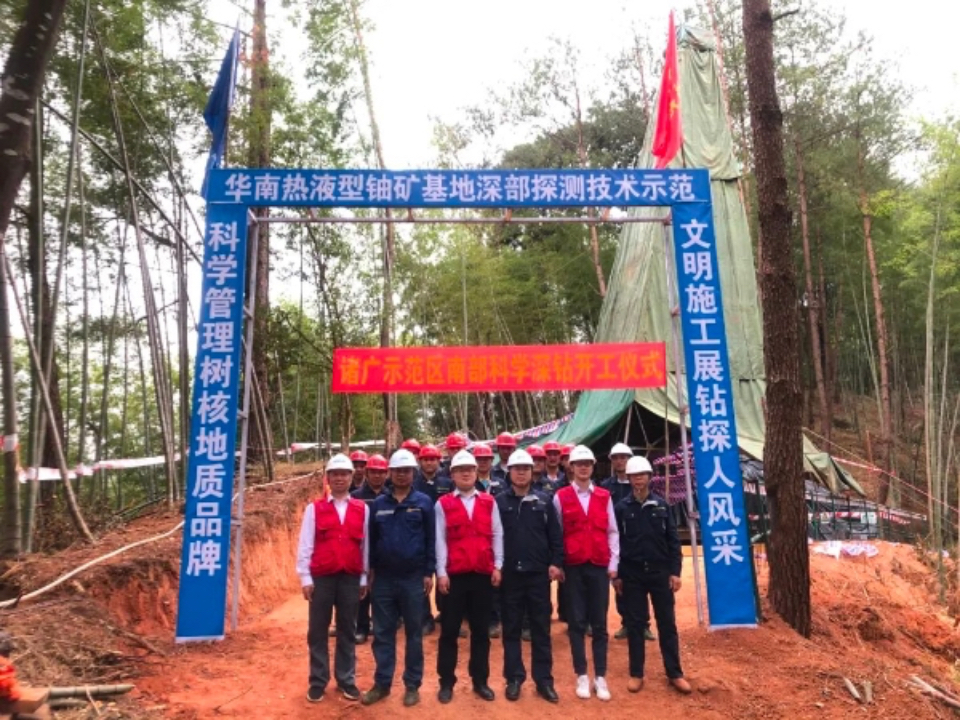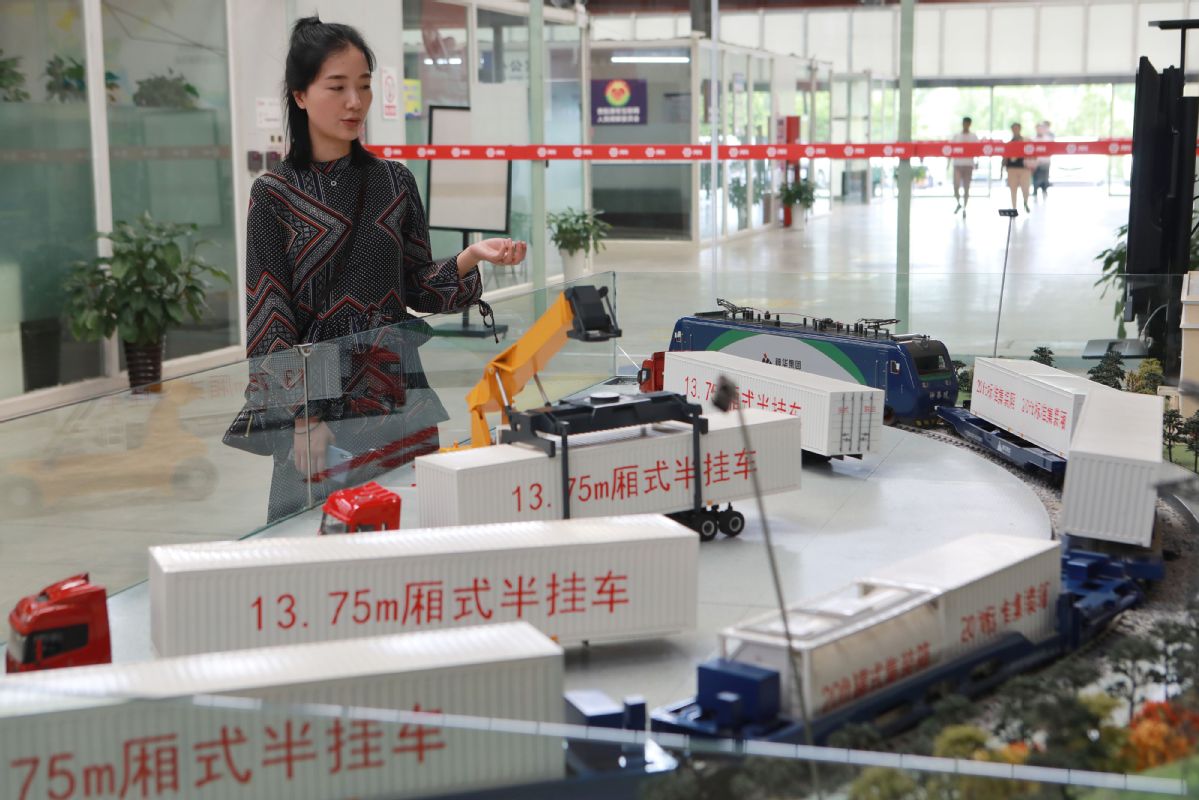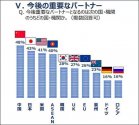You are using an out of date browser. It may not display this or other websites correctly.
You should upgrade or use an alternative browser.
You should upgrade or use an alternative browser.
Chinese Economics Thread
- Thread starter Norfolk
- Start date
China achieves breakthrough in deep earth uranium search
By Global Times Published: May 26, 2022 12:48 PM Updated: May 26, 2022 12:45 PM

Photo: Screenshot from CNNC website
After four years, the project focused on deep exploration of a hydrothermal uranium base in South China has achieved a major breakthrough in theoretical innovation of deep-source metallogenesis of hydrothermal uranium ore as well as the technical method of deep blind ore localization, marking a new level of scientific research and mineral search for hydrothermal uranium in China.
Uranium, an extremely rare radioactive metal element, is an important raw material for the nuclear industry.
The project, led by China National Nuclear Corporation (CNNC), is a national key R&D program for deep earth resources exploration and exploitation.
Li Ziying, a nuclear geology official from the Geological Society of China said that the project had reached the international leading level, opening up a new space for the deep earth mineral search in China.
As early as 2020, the project has made major breakthrough in ore exploration, including the deepest industrial uranium ore in China, which was found at 1,550 meters depth, laying a solid foundation for opening up new space for mineralization search. The breakthrough of new uranium formation depth reached the international level, comparable with Russia, Canada, Australia and Germany.
The project creatively proposed that hydrothermal uranium ore comes from deep earth, with uranium ore formation at depth of 3,000 meters. This idea broke through the previous understanding that ore formation is mainly at shallow depths, which provided a theoretical basis for finding uranium ore at depth.
In addition, the project successfully developed the first gamma energy spectrometry logging system at a depth of 3,000 meters with high temperature and high pressure resistance, providing key technical equipment for deep uranium exploration.
China has stepped up nuclear power investment to drive decarbonization.
According to a report sent to the Global Times, S&P Global predicted that by 2035, China's nuclear operating capacity will reach 145 gigawatts, accounting for 10 percent of its total electricity generation capacity.
The country will also advance new technology development and demonstration projects for the fourth-generation reactors and small modular reactors, in a bid to achieve its climate-related targets, the company said.
China's software sector maintains double-digit revenue growth

An employee demonstrates a data center model in Guiyang, Guizhou province. [Photo/Xinhua]
BEIJING - China's software and information technology sector sustained stable growth in the first four months of this year, with revenue from software-related business up 10.8 percent year-on-year, official data showed Monday.
The sector's revenue amounted to 2.77 trillion yuan ($ 415 billion) during the four-month period, according to the Ministry of Industry and Information Technology.
Companies in the sector raked in 278.5 billion yuan in combined profits in the period, down 1.4 percent year-on-year, shrinking from the 3.9 percent decline registered in the first quarter.
During the January-April period, China's software exports came in at $16 billion, up 3.6 percent year-on-year, the data showed.
Digitalization boosts logistics efficiency amid pandemic

In the face of multiple challenges including the COVID-19 pandemic, China's logistics industry is embracing digital technologies to boost efficiency.
The efforts are in line with the central government's call to support the building of digital third-party logistics delivery platforms and cultivate a batch of digital platforms and supply chain enterprises with global influence.
Full Truck Alliance Co Ltd, a leading Chinese truck-hailing company, for instance, is stepping up its push to leverage digital technologies to help boost logistics efficiency in regions affected by the pandemic.
Known as Manbang in Chinese, Full Truck Alliance's apps connect a large number of truck drivers with merchants that require shipping of their goods, which can help truck drivers find goods quickly and reduce empty-load rates and fuel consumption.
The company's two truck-hailing apps, Truck Alliance and Yunmanman, are operating "green channels" for owners of anti-epidemic products and agricultural products who are eager to deliver their goods to people in need. Their shipping requests are prioritized in the apps. For those in areas that face a serious shortage of transportation capacity, the apps will send nearby truck drivers using freight subsidies to help shippers complete delivery orders as soon as possible.
With the awareness that agricultural products in some rural regions are experiencing difficulties in getting goods shipped from villages to cities amid the pandemic, Manbang is also offering targeted logistics help to 160 counties across the nation to help rural residents who need to transport their agricultural products.
Tao Ran, vice-president of Manbang Group, which serves around one-fifth of the country's truck drivers with businesses covering more than 300 cities nationwide, said the company hopes to create a "digital expressway" for remote areas by maximizing the transportation resources on its platform.
"We hope that more truck drivers can see the shipping orders from rural regions, to help agricultural products get out of the farmlands and boost their sales through good logistics services," Tao said.
Fu Jing, sales manager of an e-commerce platform in Liupanshui, Guizhou province, said, "The cherries in the mountainous areas are of good quality and there are a lot of orders from Beijing and Shanghai, but we dare not accept them because it is difficult to find cold chain trucks locally."
In April, a large number of local cherries were ripe, but due to the imperfect logistics and transportation, many of them could not be shipped to cities.
"It's not that good things can't be sold, but they can't be shipped. When our fresh cherries first hit the market, they could sell for 60-80 yuan ($8.88 to $11.84) per kilogram in big cities such as Beijing and Shanghai. But if they were sold locally, the price is less than half," said Fu.
Manbang said it is offering targeted help to eligible agricultural products such as cherries, and it will operate the green channel for agricultural products in counties and rural towns for a long time.
Fu Shaochuan, a professor of logistics systemic analysis and planning at the School of Economics and Management at Beijing Jiaotong University, said more efforts are needed to build a smarter and more efficient logistics services network by, among other things, accelerating the construction of a cold chain express delivery system.
There is also a need to strengthen the emergency response capability of express delivery services. During emergencies such as the COVID-19 pandemic, urgent delivery of products is of prime importance not only for providing timely relief for those in need but also for restoring social order, Fu said.
In April, the Communist Party of China Central Committee and the State Council jointly released a guideline on accelerating the establishment of a unified domestic market, which said China will optimize the layout of commercial and trade circulation infrastructure and promote the integration of online and offline development.
Well IF the survey is to be believed , China had won with Japan verifying it...lol, we appreciate Japan especially its JAV industries, C'mon guys how many Sugoi moment did it give us...lol BUT as an economic partner, she fell short.
From Beijingwalker (Pakistan Defense Forum)

From Beijingwalker (Pakistan Defense Forum)
TOKYO: Nearly half of people surveyed in Southeast Asia picked China as the region's most important partner in the future, surpassing Japan for the first time, according to the results of a Japanese government opinion poll released on Wednesday.
Do these people have such short memories? Or does worst ever just means worse than last year when they are spinning negative news about China?China’s commitment to Covid Zero means it’s all but certain to miss its economic growth target by a large margin for the first time ever.Economists’ median forecast for gross domestic product growth this year has dropped to 4.5%, according to the latest survey compiled by Bloomberg, well below the official target of about 5.5%.
China had a GDP growth target of 6.0% in 2020 but actual growth was only 2.3%, missing the target by 3.7%. Even if actual growth misses the target by 1% this year, it still does not come anywhere close to the miss in 2020.
Oh yeah, China also did not collapse and descent into chaos in 2020 due to lower GDP growth like so many Western pundits kept predicting (or more accurately wishing) for years.
Japan failed hard in the 1990s when they gave up investing in Southeast Asia to invest in the US. It was a major fail.
With regards to growth, Chinese GDP is predicted to be growing faster than inflation, while US GDP is growing slower than inflation i.e. it is actually an economic contraction in absolute terms.
With regards to growth, Chinese GDP is predicted to be growing faster than inflation, while US GDP is growing slower than inflation i.e. it is actually an economic contraction in absolute terms.
Japan failed hard in the 1990s when they gave up investing in Southeast Asia to invest in the US. It was a major fail.
With regards to growth, Chinese GDP is predicted to be growing faster than inflation, while US GDP is growing slower than inflation i.e. it is actually an economic contraction in absolute terms.
There appears to be some misunderstanding of GDP growth above. If you talk about nominal GDP growth rate, then you can say it outgrows inflation or not. But when GDP growth is reported, the headline number is usually the real growth rate. That is, it's the growth after removing inflation (or GDP deflator to be accurate).
Well IF the survey is to be believed , China had won with Japan verifying it...lol, we appreciate Japan especially its JAV industries, C'mon guys how many Sugoi moment did it give us...lol BUT as an economic partner, she fell short.
From Beijingwalker (Pakistan Defense Forum)
TOKYO: Nearly half of people surveyed in Southeast Asia picked China as the region's most important partner in the future, surpassing Japan for the first time, according to the results of a Japanese government opinion poll released on Wednesday.

The results...

I thought K-Pop and all that "soft power" is what's needed for China? With all the attacks leveled against China and it's numbers relatively look stable, I say that's a good win.
